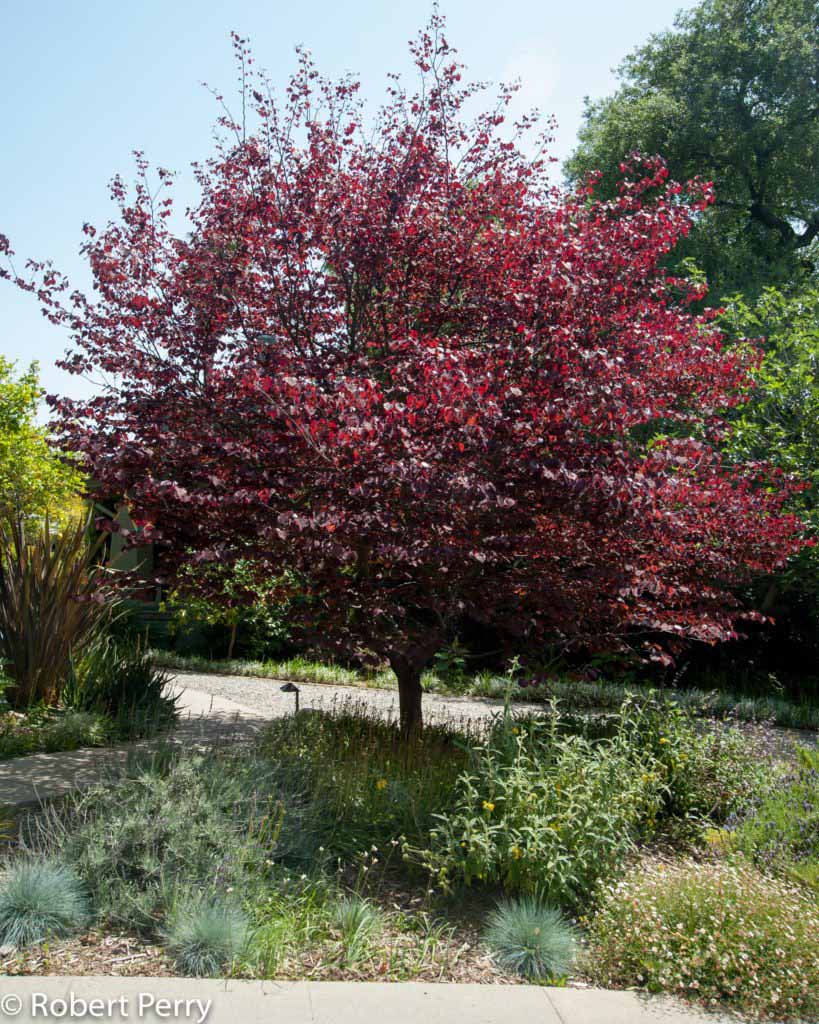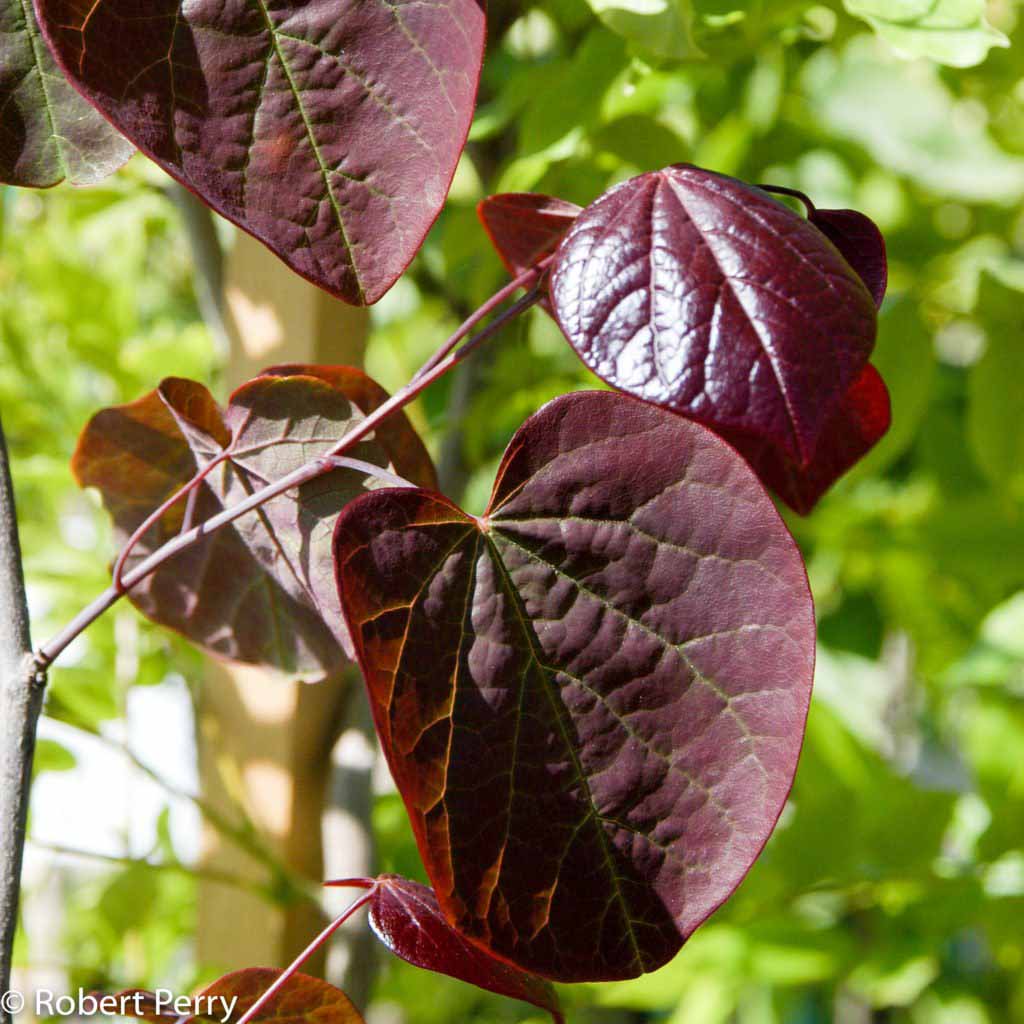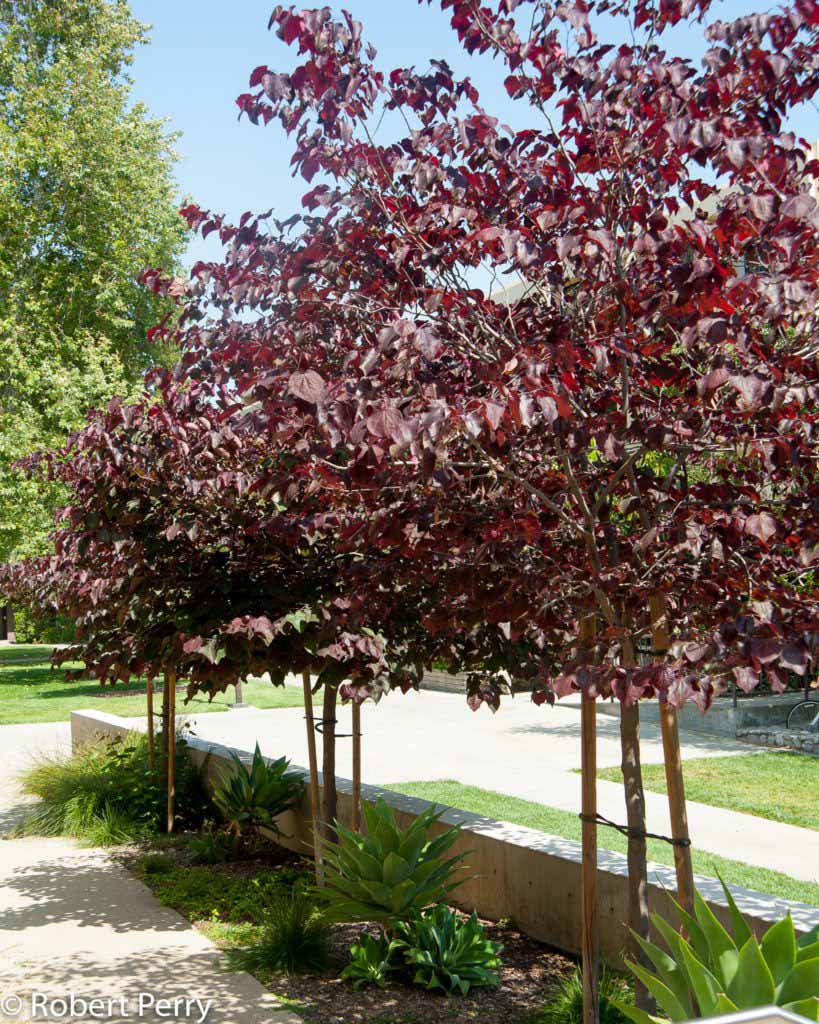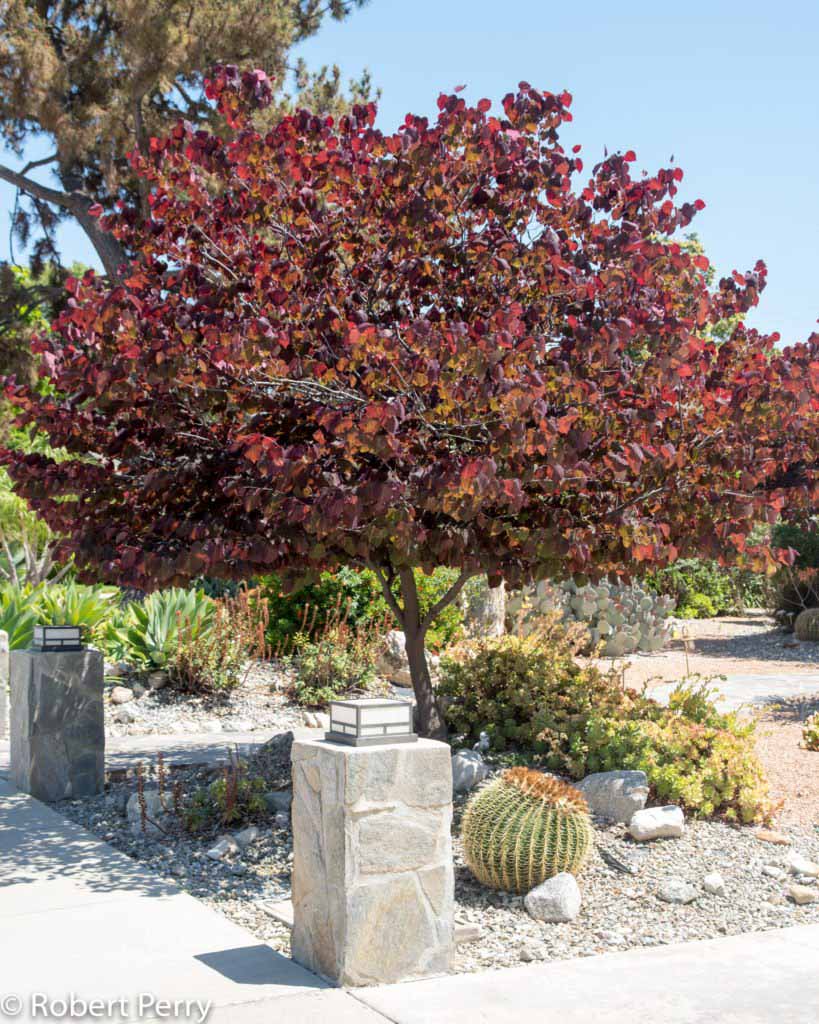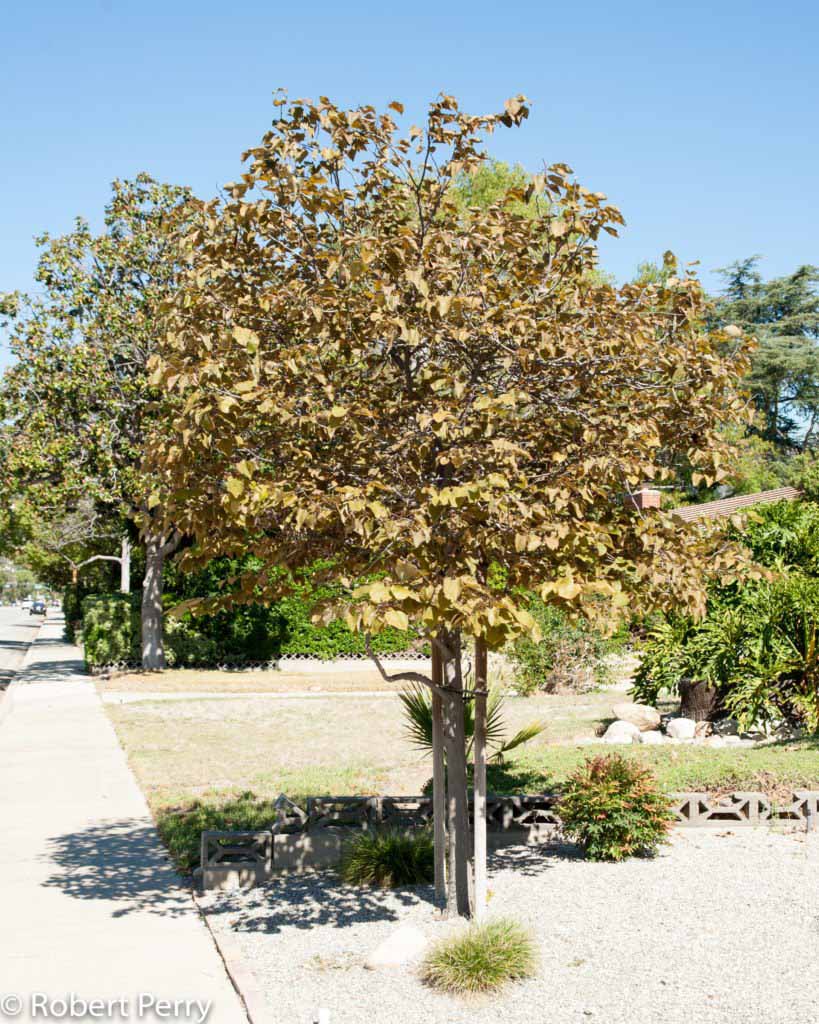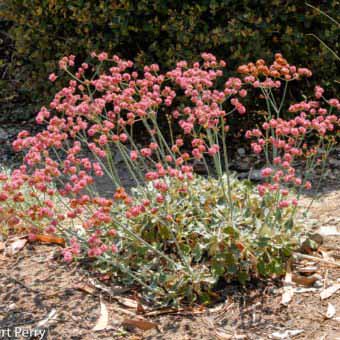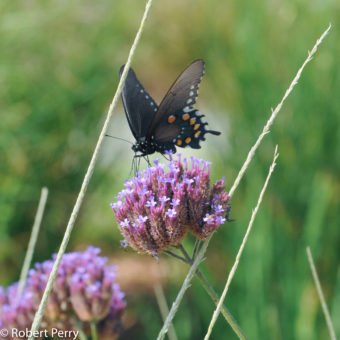The Purple-leaved eastern redbud is one of the most popular foliage accent trees in commercial landscapes and residential gardens throughout the Inland Empire. It is a small to medium size deciduous tree growing with a low branching habit, that can eventually reach 25-35 ft. tall and as wide. Bright purple-red new foliage emerges in spring and then turn pale green by the end of summer. These leaves are heart-shaped with a long pointed tip, and grow 3-6 in. across. Clusters of showy magenta flowers occur in early spring and are followed by small bean-type pods. Foliage turns bright yellow-gold in fall.
Purple-leaved eastern redbud is naturally adapted to areas with cool and moist winters and regular summer for best flowering and foliage performance. In hot Inland Empire locations, it is best to select locations that are protected from hot afternoon sun during the summer months. It is an excellent shade tree for gardens, patios and front yards where it provides year around interest.
